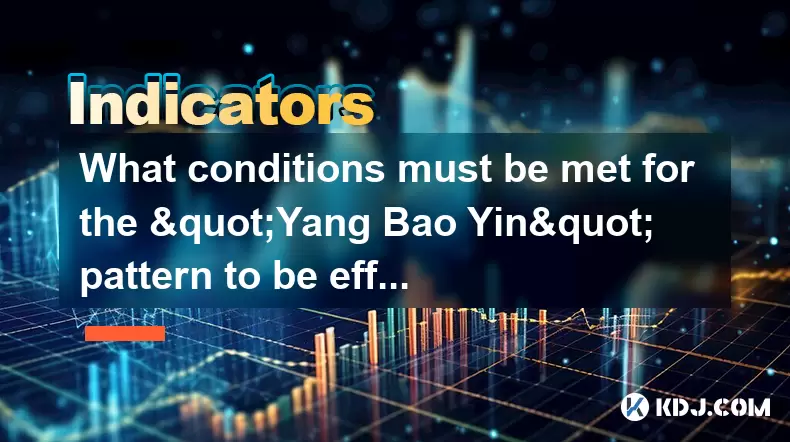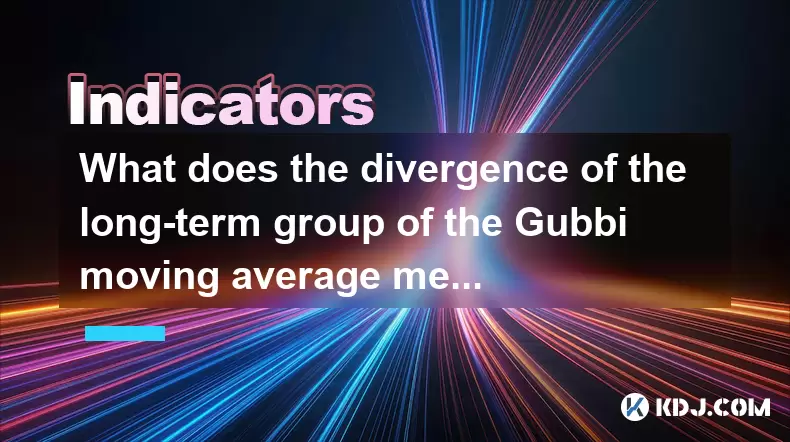-
 Bitcoin
Bitcoin $105,606.4998
2.12% -
 Ethereum
Ethereum $2,561.4949
2.56% -
 Tether USDt
Tether USDt $1.0005
0.02% -
 XRP
XRP $2.1391
1.37% -
 BNB
BNB $653.4842
1.53% -
 Solana
Solana $147.2910
2.31% -
 USDC
USDC $0.9998
0.00% -
 Dogecoin
Dogecoin $0.1784
3.78% -
 TRON
TRON $0.2701
0.73% -
 Cardano
Cardano $0.6377
1.74% -
 Hyperliquid
Hyperliquid $42.0282
10.58% -
 Sui
Sui $3.0423
2.91% -
 Bitcoin Cash
Bitcoin Cash $444.4445
9.93% -
 Chainlink
Chainlink $13.3183
2.77% -
 UNUS SED LEO
UNUS SED LEO $9.0217
0.56% -
 Avalanche
Avalanche $19.2345
1.38% -
 Stellar
Stellar $0.2589
1.12% -
 Toncoin
Toncoin $3.0082
2.59% -
 Shiba Inu
Shiba Inu $0.0...01207
4.35% -
 Hedera
Hedera $0.1577
3.59% -
 Litecoin
Litecoin $85.8538
4.24% -
 Polkadot
Polkadot $3.8194
2.66% -
 Ethena USDe
Ethena USDe $1.0004
-0.01% -
 Monero
Monero $307.9327
1.29% -
 Dai
Dai $0.9999
0.02% -
 Bitget Token
Bitget Token $4.5422
1.82% -
 Uniswap
Uniswap $7.5634
9.74% -
 Pepe
Pepe $0.0...01117
5.05% -
 Aave
Aave $289.0564
6.25% -
 Pi
Pi $0.5818
6.50%
What should I do if the ASI vibration rise and fall indicator is not synchronized with the price? When should I believe in the indicator?
The ASI vibration rise and fall indicator helps spot trend reversals, but when it diverges from price, traders should seek confirmation from other tools like volume or candlestick patterns.
Jun 13, 2025 at 12:29 pm

Understanding the ASI Vibration Rise and Fall Indicator
The Accumulation Swing Index (ASI) is a technical indicator developed by Welles Wilder to help traders identify potential reversals and confirm trends in price movements. The vibration rise and fall aspect of the ASI refers to how the line oscillates above and below its zero line, indicating shifts in market sentiment. When the ASI vibration rise and fall indicator is not synchronized with the price, it can create confusion for traders trying to interpret signals.
This lack of synchronization may occur due to lagging calculations or divergence between momentum and actual price movement. Understanding why this happens is crucial for making informed trading decisions.
Common Reasons for ASI and Price Desynchronization
There are several reasons why the ASI vibration rise and fall indicator might not align with price action:
- Lag in Calculation: The ASI uses historical data to calculate values, which can cause delays in reflecting current market conditions.
- Market Noise: Short-term volatility or erratic price behavior can lead to false signals from the indicator.
- Divergence Patterns: Sometimes, the ASI forms higher lows while price makes lower lows, or vice versa, creating a divergence that may precede a trend reversal.
- Timeframe Mismatch: Using different chart timeframes can affect how well the ASI aligns with price.
Recognizing these causes helps traders determine whether the discrepancy is temporary or indicative of a larger shift in market dynamics.
Interpreting Divergence Between ASI and Price
When the ASI vibration rise and fall indicator diverges from price, it may signal an upcoming change in trend direction. For example:
- If price reaches a new high but the ASI fails to surpass its previous peak, this could indicate weakening momentum and a potential bearish reversal.
- Conversely, if price hits a new low but the ASI does not confirm with a lower low, this may suggest hidden strength and a possible bullish turnaround.
Traders should look for confirmation through other tools like volume analysis or candlestick patterns before acting solely on divergence. Relying only on one indicator can lead to premature or incorrect trade entries.
When to Trust the ASI Vibration Rise and Fall Indicator
To determine when you should trust the ASI vibration rise and fall indicator, consider the following factors:
- Trend Confirmation: In strong trending markets, the ASI often aligns well with price movement. A rising ASI during an uptrend reinforces bullish momentum.
- Zero Line Crossovers: When the ASI crosses above the zero line, it may indicate a shift to bullish control; crossing below suggests bearish dominance.
- Consistency Across Timeframes: If multiple timeframes show similar ASI behavior relative to price, it increases the reliability of the signal.
- Volume Correlation: High volume accompanying ASI movements can validate its accuracy, especially during breakouts or breakdowns.
By evaluating these aspects, traders can better assess when the ASI is likely to be reliable and when it may be giving misleading information.
Practical Steps to Use ASI in Trading Decisions
Here’s how to practically apply the ASI vibration rise and fall indicator when it appears out of sync with price:
- Identify Key Support and Resistance Levels: Overlay the ASI on a chart that includes clear support and resistance zones to see if it confirms or contradicts price behavior near those levels.
- Use Other Indicators for Confirmation: Combine the ASI with moving averages or RSI to filter out false signals and improve accuracy.
- Observe Historical Performance: Backtest the ASI on past charts to see how it performed during similar price conditions.
- Wait for Confirmation Candles: Before entering a trade based on ASI divergence, wait for a candlestick pattern that confirms the expected reversal.
- Adjust Sensitivity Settings: Some platforms allow tweaking the ASI formula parameters. Experiment cautiously to find a setting that improves responsiveness without increasing noise.
These steps help traders avoid impulsive decisions and increase confidence in their trading strategy.
Adjusting Your Strategy Based on ASI Signals
If the ASI vibration rise and fall indicator gives conflicting signals, it's essential to adjust your trading approach accordingly:
- Avoid Overtrading: During periods of inconsistency, reduce the number of trades and focus on high-probability setups.
- Reassess Market Conditions: Determine whether the asset is in a ranging or trending phase, as the ASI behaves differently in each environment.
- Incorporate Fundamental Inputs: Sometimes price moves based on news or macroeconomic events that the ASI cannot predict. Stay aware of external factors affecting the market.
- Monitor Multiple Assets: Compare the ASI performance across correlated assets to spot anomalies or broader market shifts.
- Maintain a Trading Journal: Record instances where the ASI was accurate or misleading to refine your understanding over time.
Adapting your strategy ensures you're not blindly following the indicator but using it as part of a comprehensive trading plan.
Frequently Asked Questions
Q: Can the ASI vibration rise and fall indicator be used alone for trading decisions?
No, the ASI vibration rise and fall indicator should not be used in isolation. It works best when combined with other technical tools such as volume indicators, moving averages, or candlestick patterns to confirm signals and filter out false ones.
Q: How do I know if the ASI is giving a false signal?
A false signal occurs when the ASI suggests a trend reversal or continuation, but price does not follow through. This can be identified by observing whether price reacts at key levels or ignores them despite ASI indications. Confirming with volume or price action significantly reduces the risk of acting on false signals.
Q: Is the ASI more effective in certain market conditions?
Yes, the ASI vibration rise and fall indicator performs better in trending markets than in sideways or choppy conditions. In ranging environments, it may produce frequent crossovers and whipsaws that make interpretation difficult.
Q: Does changing the calculation period affect the ASI’s reliability?
Yes, adjusting the calculation period changes how sensitive the ASI is to price changes. A shorter period makes it more reactive but increases noise, while a longer period smooths the data but introduces more lag. Traders should test different settings to find what works best for their strategy and timeframe.
Disclaimer:info@kdj.com
The information provided is not trading advice. kdj.com does not assume any responsibility for any investments made based on the information provided in this article. Cryptocurrencies are highly volatile and it is highly recommended that you invest with caution after thorough research!
If you believe that the content used on this website infringes your copyright, please contact us immediately (info@kdj.com) and we will delete it promptly.
- Punisher Coin ($PUN) Surges Past the $150,000 Mark in Its Fifth Presale Stage, Targeting a 12x Return
- 2025-06-14 08:55:12
- A growing divide among U.S. states reveals opposing approaches to cryptocurrencies and blockchain innovation.
- 2025-06-14 08:55:12
- Shiba Inu (SHIB) Price Gears for 20% Rally as it Tests Crucial Resistance
- 2025-06-14 08:50:12
- Sui Breaks Out From Consolidation: $4 SUI Price Target Now Achievable
- 2025-06-14 08:50:12
- tBTC Launches on Starknet, Bringing Bitcoin to the World of Zero-Knowledge Rollups
- 2025-06-14 08:45:12
- NFT Casinos Are Merging Gaming and Crypto in Interesting Ways
- 2025-06-14 08:45:12
Related knowledge

How to calculate the probability of trend continuation after the MACD column divergence?
Jun 14,2025 at 08:01am
Understanding MACD Column DivergenceThe Moving Average Convergence Divergence (MACD) is a widely used technical indicator in cryptocurrency trading. The MACD column, also known as the histogram, represents the difference between the MACD line and the signal line. When price makes a new high or low but the MACD histogram does not confirm this movement, a...

What are the volume requirements for adjusting the K line in the "rising three methods" pattern?
Jun 14,2025 at 07:50am
Understanding the 'Rising Three Methods' Pattern in Cryptocurrency TradingThe 'rising three methods' pattern is a bullish continuation candlestick formation that traders often use to identify potential upward momentum in cryptocurrency price charts. This pattern typically appears during an uptrend and suggests that the trend is likely to continue after ...

What conditions must be met for the "Yang Bao Yin" pattern to be effective?
Jun 14,2025 at 06:42am
Understanding the 'Yang Bao Yin' Pattern in Cryptocurrency TradingThe Yang Bao Yin pattern is a candlestick formation commonly observed in technical analysis within the cryptocurrency market. This pattern typically signals a potential bullish reversal after a downtrend. However, for this pattern to be effective and reliable, certain conditions must be m...

Is it an opportunity for the long positive line with large volume to break through the platform and then shrink back?
Jun 14,2025 at 04:42am
Understanding the Long Positive Line with Large VolumeIn technical analysis, a long positive line refers to a candlestick pattern where the closing price is significantly higher than the opening price, often indicating strong buying pressure. When this occurs alongside large volume, it suggests that market participants are actively involved in pushing t...

How to grasp the 60-minute KD oversold + 15-minute bottom divergence?
Jun 14,2025 at 06:15am
Understanding the 60-Minute KD Oversold SignalThe KD indicator, also known as the Stochastic Oscillator, is a momentum oscillator that compares a particular closing price of a cryptocurrency to its price range over a given time period. When analyzing 60-minute charts, traders often look for oversold conditions in the KD line, which typically occur when ...

What does the divergence of the long-term group of the Gubbi moving average mean? How long can the trend last?
Jun 14,2025 at 02:56am
Understanding the Gubbi Moving AverageThe Gubbi moving average is a technical indicator used by traders in cryptocurrency markets to identify trends and potential reversals. Unlike traditional moving averages, the Gubbi variant incorporates unique calculations that emphasize price momentum and volatility adjustments. This makes it particularly useful fo...

How to calculate the probability of trend continuation after the MACD column divergence?
Jun 14,2025 at 08:01am
Understanding MACD Column DivergenceThe Moving Average Convergence Divergence (MACD) is a widely used technical indicator in cryptocurrency trading. The MACD column, also known as the histogram, represents the difference between the MACD line and the signal line. When price makes a new high or low but the MACD histogram does not confirm this movement, a...

What are the volume requirements for adjusting the K line in the "rising three methods" pattern?
Jun 14,2025 at 07:50am
Understanding the 'Rising Three Methods' Pattern in Cryptocurrency TradingThe 'rising three methods' pattern is a bullish continuation candlestick formation that traders often use to identify potential upward momentum in cryptocurrency price charts. This pattern typically appears during an uptrend and suggests that the trend is likely to continue after ...

What conditions must be met for the "Yang Bao Yin" pattern to be effective?
Jun 14,2025 at 06:42am
Understanding the 'Yang Bao Yin' Pattern in Cryptocurrency TradingThe Yang Bao Yin pattern is a candlestick formation commonly observed in technical analysis within the cryptocurrency market. This pattern typically signals a potential bullish reversal after a downtrend. However, for this pattern to be effective and reliable, certain conditions must be m...

Is it an opportunity for the long positive line with large volume to break through the platform and then shrink back?
Jun 14,2025 at 04:42am
Understanding the Long Positive Line with Large VolumeIn technical analysis, a long positive line refers to a candlestick pattern where the closing price is significantly higher than the opening price, often indicating strong buying pressure. When this occurs alongside large volume, it suggests that market participants are actively involved in pushing t...

How to grasp the 60-minute KD oversold + 15-minute bottom divergence?
Jun 14,2025 at 06:15am
Understanding the 60-Minute KD Oversold SignalThe KD indicator, also known as the Stochastic Oscillator, is a momentum oscillator that compares a particular closing price of a cryptocurrency to its price range over a given time period. When analyzing 60-minute charts, traders often look for oversold conditions in the KD line, which typically occur when ...

What does the divergence of the long-term group of the Gubbi moving average mean? How long can the trend last?
Jun 14,2025 at 02:56am
Understanding the Gubbi Moving AverageThe Gubbi moving average is a technical indicator used by traders in cryptocurrency markets to identify trends and potential reversals. Unlike traditional moving averages, the Gubbi variant incorporates unique calculations that emphasize price momentum and volatility adjustments. This makes it particularly useful fo...
See all articles

























































































